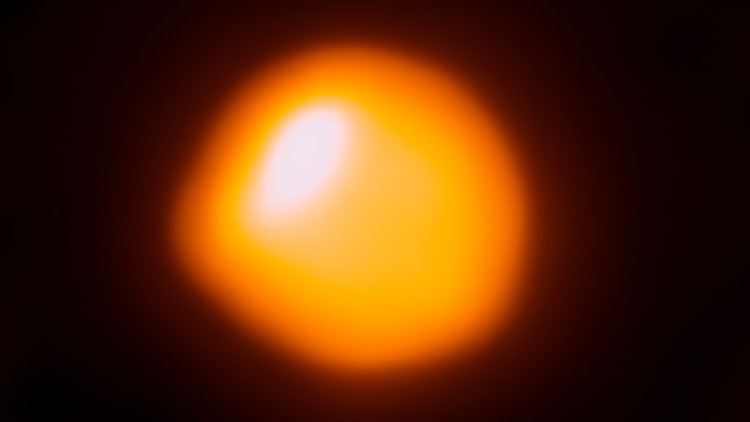The star is about to explode 1,400 times larger than the Sun.
When the red giant star is 1,400 times larger than the Sun explodes, the light emitted can be observed from above the Earth.
Eamon O'Gorman and colleagues at Dublin Institute of Advanced Studies (DIAS), Ireland, use the world's largest radio telescope ALMA in Chile to observe chromosphere of Betelgeuse star in step wave below millimeter.

Red giant star Betelgeuse.(Photo: ALMA).
The results of the study published in June 20 in Astronomy & Astrophysics show that Betelgeuse's atmosphere has an average temperature of 2,487 degrees Celsius at a distance of 1.3 times the star radius, lower than the temperature of the photosphere (3,417 degrees Celsius) and the temperature at a distance equal to twice the radius of the star. The team believes that the atmosphere is not heated evenly due to large-scale convection caused by the star's magnetism.
In addition, the scientists discovered the emission of gas and dust in the atmosphere of Betelgeuse asymmetrical in spherical shape that was deflected to the east and northeast."The asymmetric dispersion process shows that local warming takes place in Betelgeuse's atmosphere , " the team concluded.
Betelgeuse, the second brightest star in Orion , is a red giant star located 650 light-years from Earth, according to Sci-News. It has a radius of 1,400 times greater than the Sun and 100,000 times brighter than the Sun.
Although only eight million years old, Betelgeuse has reached the end of his life and is about to explode into a supernova. When this happens, the supernova will easily be seen from the Earth, even in daylight.
- An oversized supernova image is exploding
- Scientists see a star about to explode
- The mysterious age of the mysterious star
- Discovering a star 300 times larger than the sun
- Detecting star clusters 30 million times brighter than the Sun.
- The supernova is 20 times brighter than the Milky Way
- Discover a new planet 13 times larger than Jupiter
- Why does the phone explode while charging?
- Why does the balloon explode?
- Abnormal light reduction star may be caused by dust cloud
- Consumption of cosmic energy is 30 times more than expected
- Giant stars are created from 'star nursery'.
 Van Allen's belt and evidence that the Apollo 11 mission to the Moon was myth
Van Allen's belt and evidence that the Apollo 11 mission to the Moon was myth The levels of civilization in the universe (Kardashev scale)
The levels of civilization in the universe (Kardashev scale) Today Mars, the sun and the Earth are aligned
Today Mars, the sun and the Earth are aligned The Amazon owner announced a secret plan to build a space base for thousands of people
The Amazon owner announced a secret plan to build a space base for thousands of people